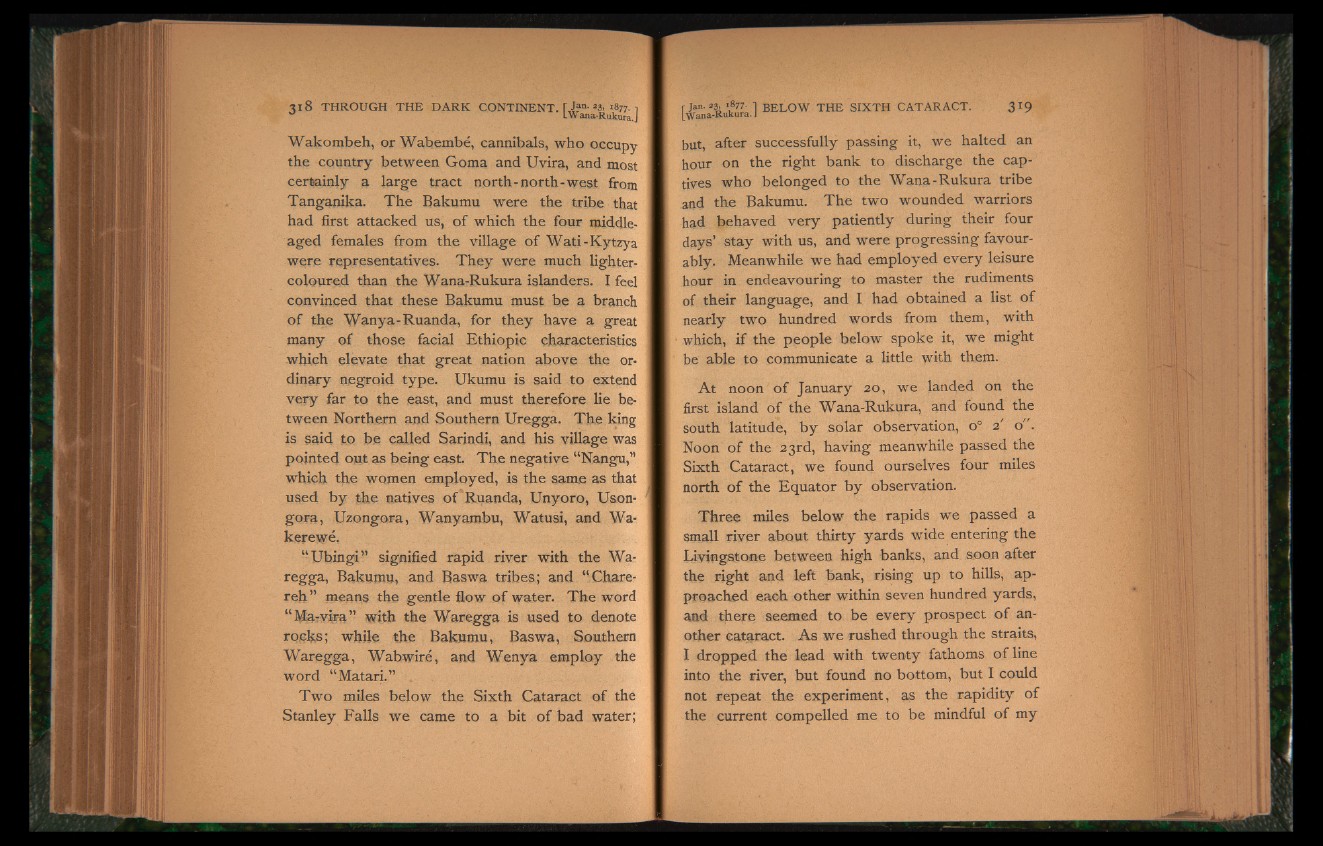
Wakombeh, or Wabembe, cannibals, who occupy
the country between Goma and Uvira, and most
certainly a large tract north-north-west from
Tanganika. The Bakumu were the tribe that
had first attacked us, of which the four middle-
aged females from the village of Wati-Kytzya
were representatives. They were much lighter-
coloured than the Wana-Rukura islanders. I feel
convinced that these Bakumu must be a branch
of the Wany a-Ruanda, for they have a great
many of those facial Ethiopic characteristics
which elevate that great nation above the ordinary
negroid type. Ukumu is said to extend
very far to the east, and must therefore lie between
Northern and Southern Uregga. The king
is said to be called Sarindi, and his village was
pointed opt as being east. The negative “Nangu,"
which the women employed, is the same as that
used by the natives of Ruanda, Unyoro, Uson-
gora, Uzongora, Wanyambu, Watusi, and Wa-
keretye.
“ IJbingi” signified rapid river with the Wa-
regga, Baknmu, and Baswa tribes; and “ Chare-
refr” means the gentle flow of water. The word
“ Ma-vira ” with the Waregga is used to denote
rocks; while the Bakumu, Baswa, Southern
Waregga, Wabwire, and Wenya employ the
word “Matari.” .
Two miles below the Sixth Cataract of the
Stanley Falls we came to a bit of bad water;
but, after successfully passing it, we halted an
hour on the right bank to discharge the captives
who belonged to the Wana-Rukura tribe
and the Bakumu. The two wounded warriors
had behaved very patiently during their four
days’ stay with us, and were progressing favourably.
Meanwhile we had employed every leisure
hour in endeavouring to master the rudiments
of their language, and I had obtained a list of
nearly two hundred words from them, with
which, if the people below spoke it, we might
be able to communicate a little with them.
At noon of January 20, we landed on the
first island of the Wana-Rukura, and found the
south latitude, by solar observation, o° 2' o".
Noon of the 23rd, having meanwhile passed the
Sixth Cataract, we found ourselves four miles
north of the Equator by observation.
Three miles below the rapids we passed a
small river about thirty yards wide entering the
Livingstone between high banks, and soon after
the right and left bank, rising up to hills, approached
each other within seven hundred yards,
and there seemed to be every prospect of another
cataract. As we rushed through the straits,
I dropped the lead with twenty fathoms of line
into the river, but found no bottom, but I could
not repeat the experiment, as the rapidity of
the current compelled me to be mindful of my